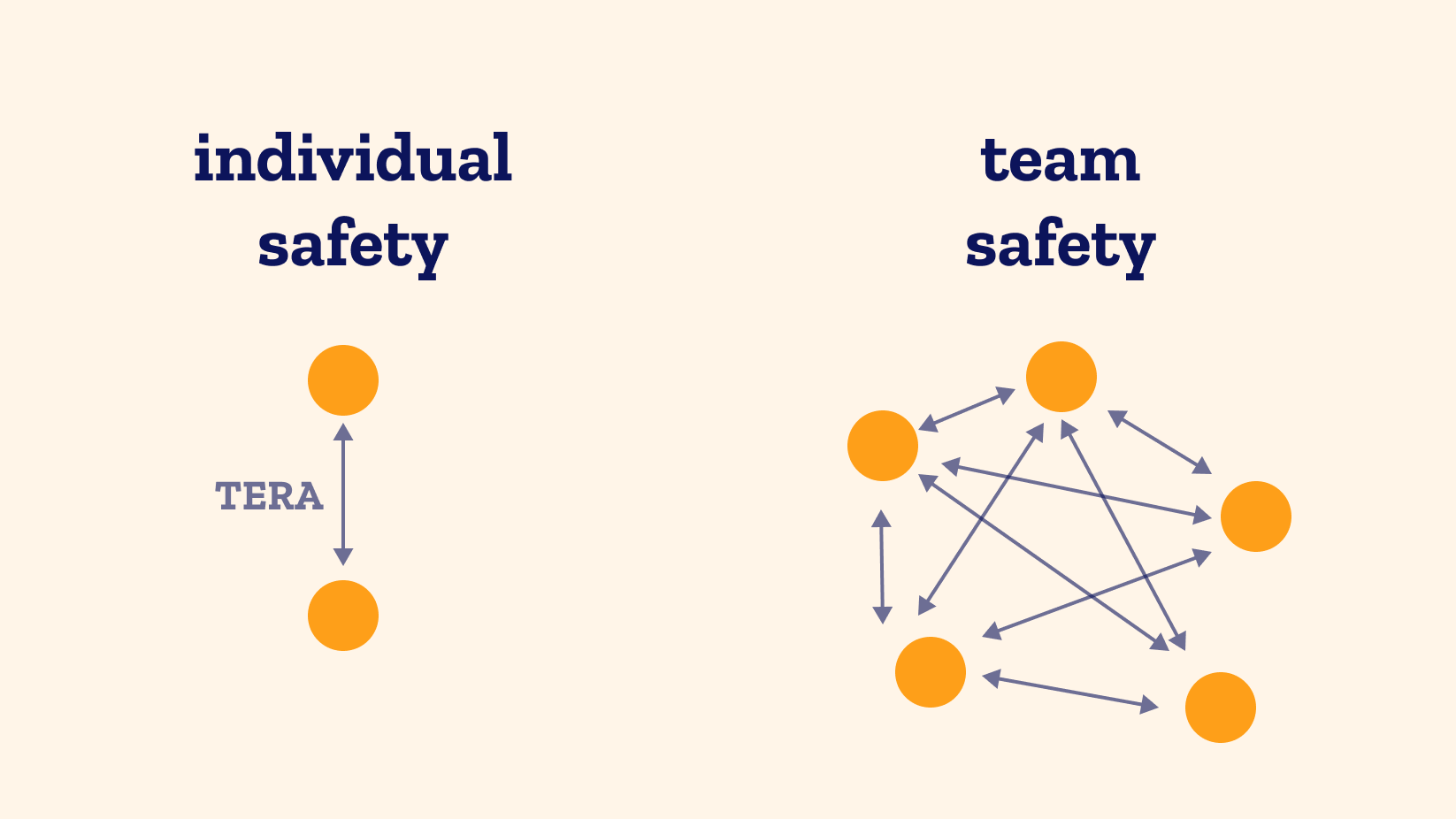Bringing clarity
There's a metric for team safety, and it's not something we can control

Last week I read 📚 The Advice Trap and it's just great — it helps you be a better coach. It also argues that one of the responsibilities of a coach (and ultimately, one of the responsibilities of a manager) is to create a safe and inclusive space for their team.
We often talk about how to create that inclusive space. We share facilitation techniques, things that we shouldn't do, and how to avoid our biases. However, I found that it's difficult to actually know whether a place is inclusive enough — in other words, what an inclusive space actually is. 📚 The Advice Trap answers this question for an individual, and gives a tool to almost measure it. Enter the TERA quotient.
TERA is an acronym of four drivers that our brain uses to assess whether a situation is safe or not. It stands for:
- Tribalism (are you with me, or against me?)
- Expectation (do I know what's going to happen?)
- Rank (are you more important than me?)
- Autonomy (do I have any say in this?)
The book further goes into tactics for increasing the TERA quotient, but I'd like to see this applied in teams. To me, the best thing that a manager can do to support the culture is to make sure that the answers to these questions are clear. Creating a safe space means ensuring that the answers to these questions are clear and positive for everyone in the team.

This is difficult, because, as a manager, you cannot be there for all the individual conversations to support the trust-building. However, you can make it so that the people can identify their own TERA quotient. It doesn't have to be measured explicitly, but we can provide ways for people to understand these answers on their own.
For example, Tribalism. As a manager (or an exec), you can set the frame of identifying with the tribe. The team can later use that frame to gauge whether someone is part of their tribe or not. Let's take an example: the team is defined as "we're top performers who are relentlessly pursuing customer satisfaction". Every individual can measure up everyone in their team — are we all part of the same tribe? — and it would be more difficult to build safety if not everyone belongs to the tribe definition.
Before this begins to sound Macchiavelian — if it hasn't already — the point is not to shape the definitions, since that's too much work to maintain. The key idea is that safety can be measured and improved, and the first step to that is bringing clarity.
So, In order to build a safe environment, we need to make sure that there's clarity surrounding the TERA questions. And that's a manager's first job.
Ivan's 🪴 Newsletter
Join the newsletter to receive the latest updates in your inbox.
